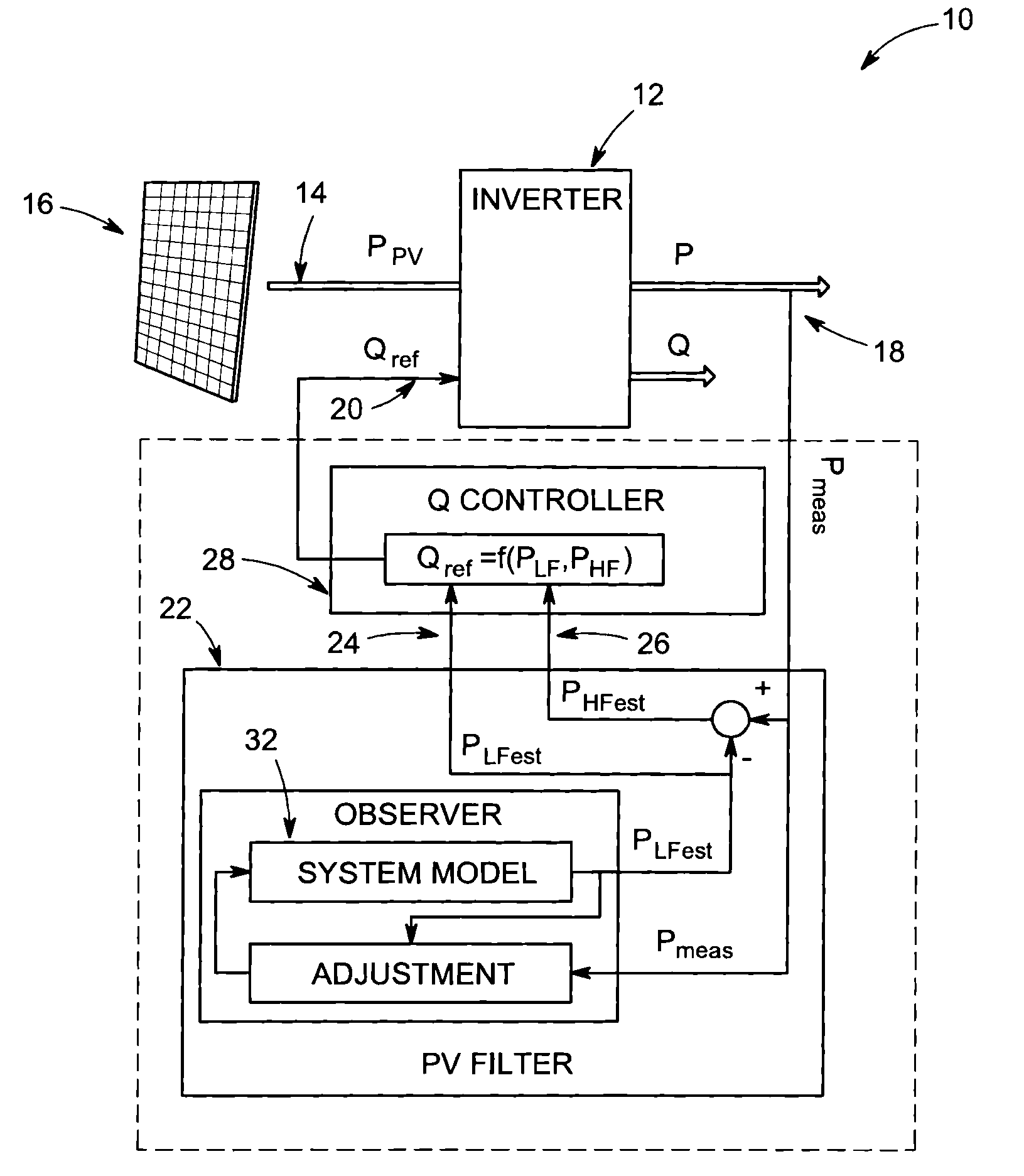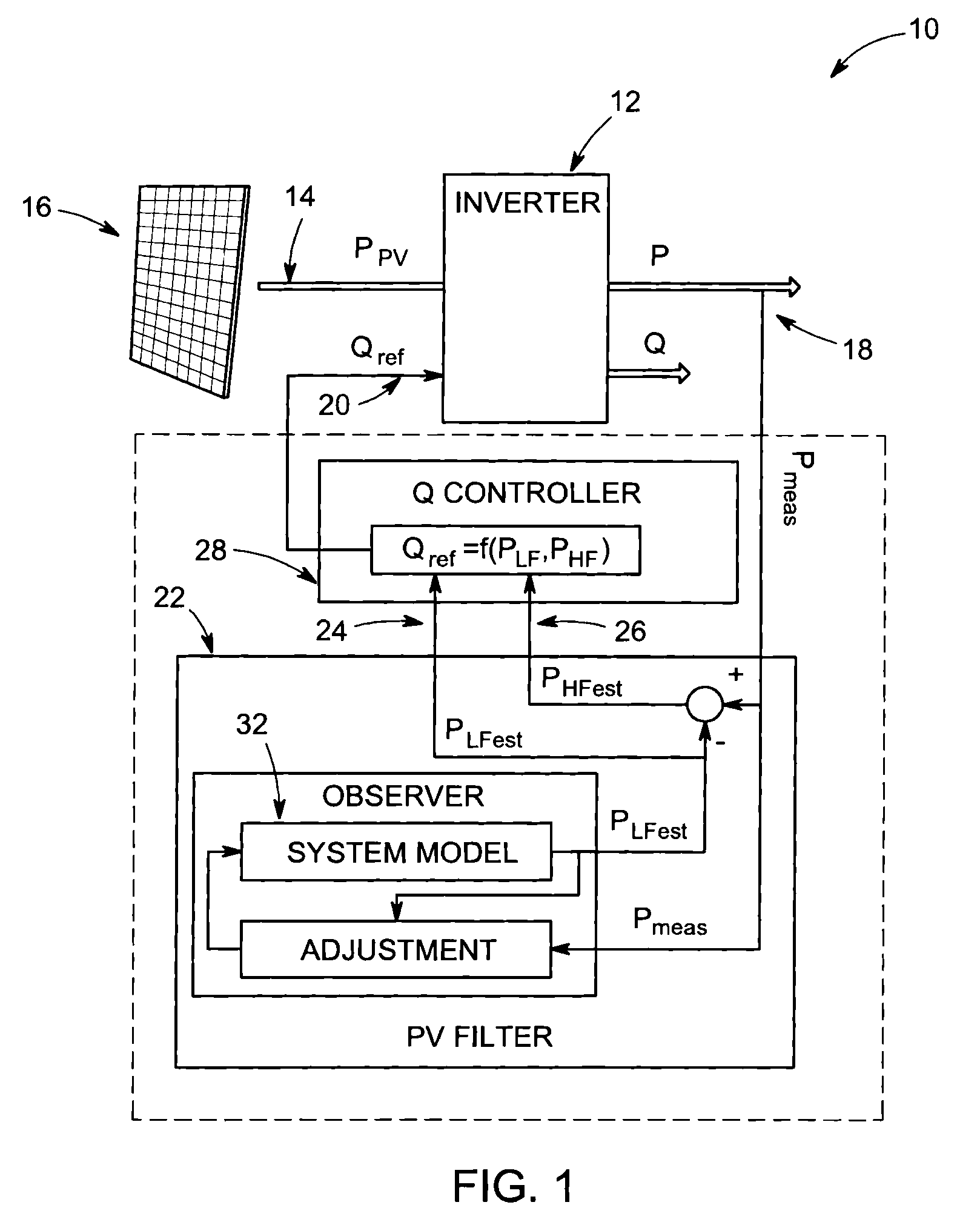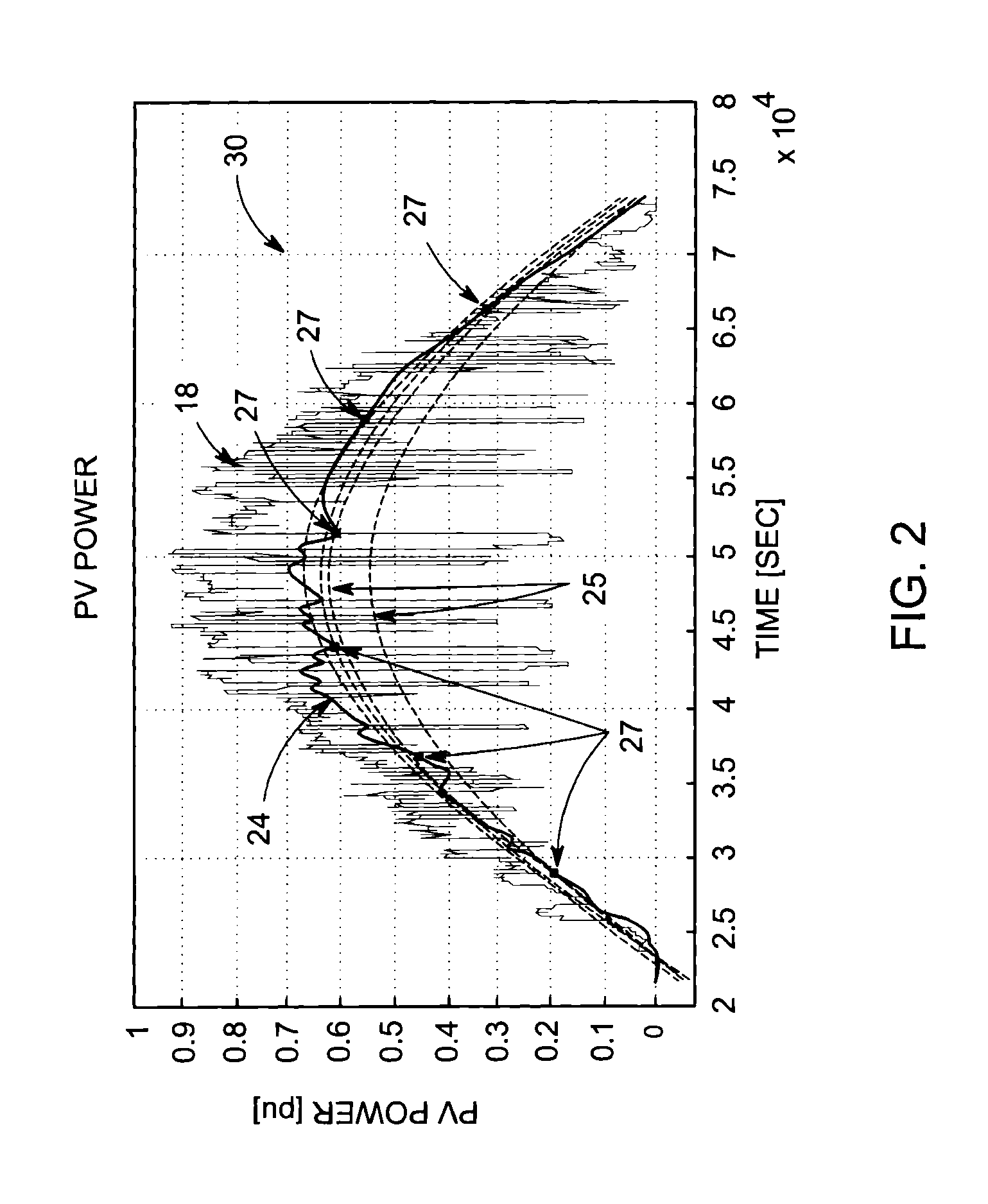System and method of online filtering of photovoltaic signals
a photovoltaic signal and filtering system technology, applied in adaptive control, process and machine control, instruments, etc., can solve the problems of large reactive power, complex compensation methods with higher compensation accuracy, and inability to control the output voltage of the closed loop voltage controller
- Summary
- Abstract
- Description
- Claims
- Application Information
AI Technical Summary
Benefits of technology
Problems solved by technology
Method used
Image
Examples
Embodiment Construction
[0018]Photovoltaic (PV) inverters are capable of providing dynamic reactive power support to compensate for voltage variations caused by PV variability. Inverters with reactive power capabilities need to be sized larger to handle full active and reactive currents. Further, reactive currents produce additional network losses and reduce the efficiency of the inverter. In networks with low reactance / resistance (X / R) ratios (e.g. LV cable networks), large amounts of reactive power are required for voltage compensation. This requires large reactive power capabilities (i.e. relatively larger inverters) and leads to larger increases in network and inverter losses. Ideally, dynamic reactive compensation capabilities should therefore be used for compensating the faster and smaller voltage variations, while slower but larger voltage variations could be compensated more efficiently by slower on-line-tap-changers (OLTCs) and voltage regulators.
[0019]Dividing voltage regulation between slow trad...
PUM
 Login to View More
Login to View More Abstract
Description
Claims
Application Information
 Login to View More
Login to View More - R&D
- Intellectual Property
- Life Sciences
- Materials
- Tech Scout
- Unparalleled Data Quality
- Higher Quality Content
- 60% Fewer Hallucinations
Browse by: Latest US Patents, China's latest patents, Technical Efficacy Thesaurus, Application Domain, Technology Topic, Popular Technical Reports.
© 2025 PatSnap. All rights reserved.Legal|Privacy policy|Modern Slavery Act Transparency Statement|Sitemap|About US| Contact US: help@patsnap.com



